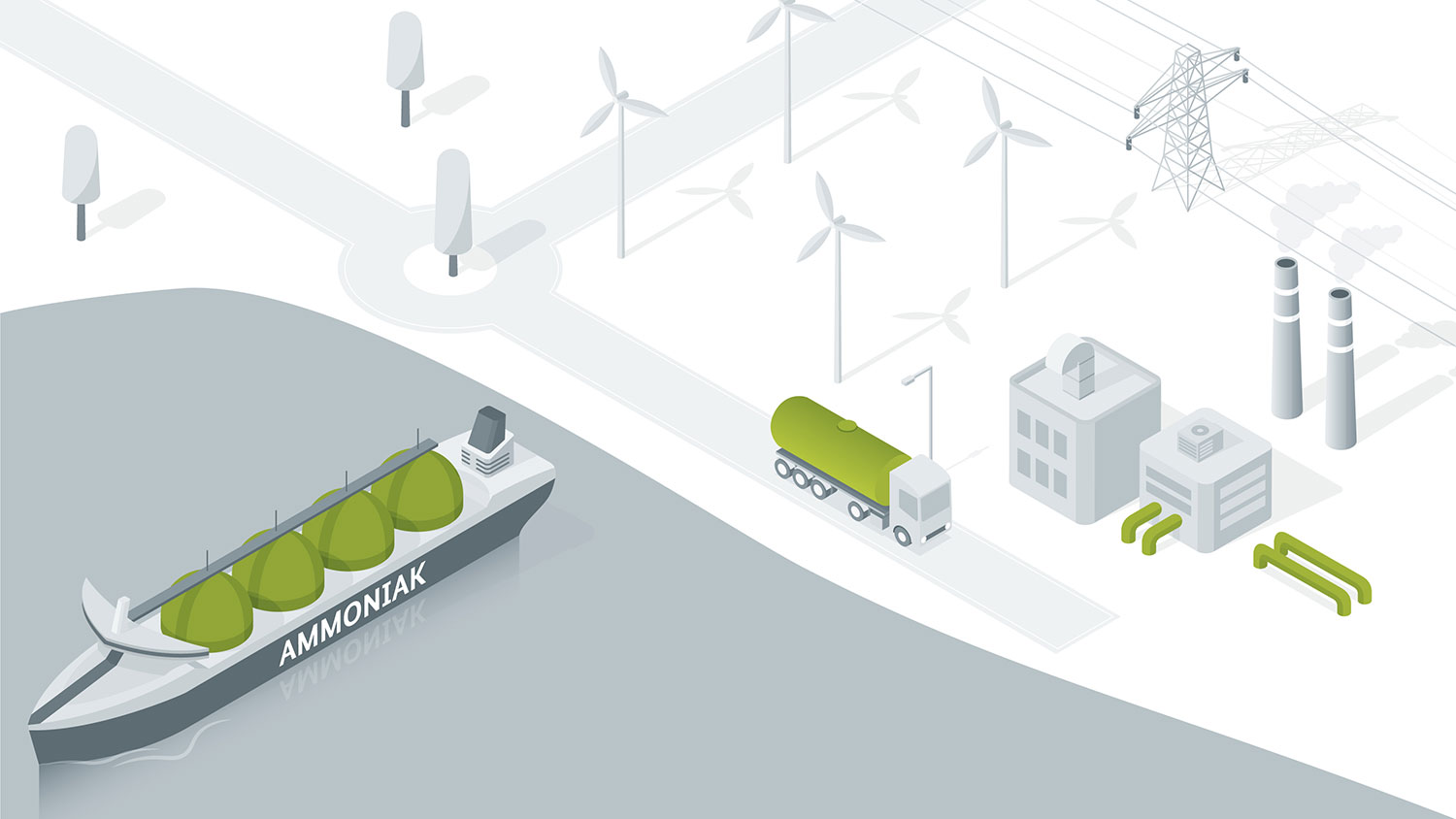The transformation of the energy system, with the aim of achieving greenhouse gas neutrality by 2045, represents a significant challenge. Action is urgently needed in all demand sectors. The increasing share of renewable energies in electricity and heat generation means that suitable storage and sector coupling options are required for an efficient energy system design.
The National Hydrogen Strategy of the German federal government focuses on green hydrogen as a key building block to ensure that Germany's energy requirements are met in every sector despite overall climate-neutrality. The strategy shows that the use of green hydrogen, alongside energy efficiency and the direct use of renewables, plays a central role in the transformation of industry, the transport sector and the energy industry toward sustainability and climate neutrality. As is clearly explained in the National Hydrogen Strategy, the highly ambitious targets for all sectors, to be achieved by 2030 and 2045, cannot be met unless hydrogen and its derivatives are introduced into the system in significant quantities. This means that by 2030, from domestic production alone around 30 TWh or approx. 1 million tonnes of hydrogen per year must be managed and distributed. This figure will be considerably higher after the complete defossilization of the national energy system. An appropriate transportation and distribution network for this volume of hydrogen needs to be in place by 2030.
TransHyDE – Storage and transportation solutions for green hydrogen
The hydrogen flagship project TransHyDE, with its five research and four implementation networks, is working on the optimal design for hydrogen infrastructures to create the greatest possible efficiency and resilience. The technological focus of TransHyDE is the research and development of transport and storage options for gaseous and liquid hydrogen, ammonia and liquid organic hydrogen carriers (LOHCs). The results obtained will be integrated directly into roadmapping processes for the development of a hydrogen infrastructure by 2045, and for the closing of standardization, certification and regulatory gaps. The flagship project is coordinated by Fraunhofer IEG, among others.
Within the subproject on system analysis, the Fraunhofer institutes IEE, IEG, IFF, IKTS, ISE, ISI and SCAI are working to classify the various transport technology options within the overall system. This analysis takes account of the spatial and temporal development of supply, demand and connecting transport and logistics infrastructures for green H2 at national and EU level, as well as the resulting interactions with electricity infrastructures and other energy sources.
In the subproject on safe infrastructure, the Fraunhofer institutes IEG, IPM and IWM are developing concepts and methods for evaluating materials and components that come into contact with H2 gas, and their suitability for accident-proof and long-term use in a real H2 transport infrastructure. They are developing gas sensors and sensor systems to ensure the safety of H2 infrastructures and components and to test the sensor technology under near-real conditions on the test rig.
Fraunhofer ISE is researching an application-oriented, industrially feasible, safe and cost-effective technology for reforming ammonia, within the AmmoRef consortium.
Research into hydrogen pipeline coatings, fouling protection and optimized coating and adhesive systems for LOHC storage systems is the focus of Fraunhofer IFAM 's work in the TransHyDE Helgoland network.



